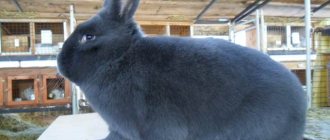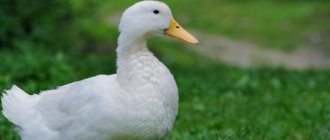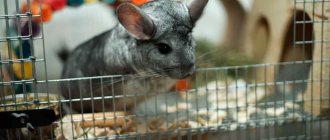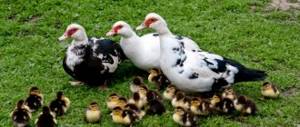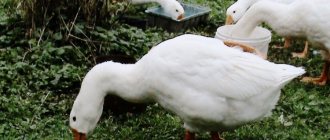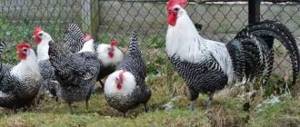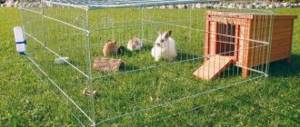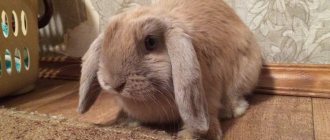History of the origin of the breed
Vietnamese pigs were introduced to Europe and Canada from Vietnam in the mid-1980s. And after a fairly short time, the fashion for them spread throughout the world. They began to be bred in America and many European countries.
The most serious breeding work is now being carried out in Hungary and Canada.
Here breeders put a lot of effort into making the breed as productive as possible. They focus on increasing the size of animals and increasing their body weight.
In the countries of the former CIS, Vietnamese pigs have spread relatively recently.
Sales of finished products
Before you open a home farm as a business and invest money in it, you need to carefully analyze the market and determine ways to sell the finished products.
Small amounts of meat and lard can be sold to neighbors, work colleagues and acquaintances. When your business begins to expand, try opening a workshop for the production of semi-finished meat products. Another fairly profitable option is a butcher shop. It can sell not only pork, but also meat from rabbits or poultry raised on your farm.
Breed characteristics
Vietnamese pigs have some characteristics that are important to consider when breeding them. Many pigs are simply a trend that arose after the rapidly spreading fashion for this breed.
A distinctive feature of the breed is its rapid growth. Females reach maturity at 4 months, and males at 6 months. Caring for piglets is not difficult.
The sow does not interfere with human intervention in the care process and is friendly. Vietnamese pigs have a very well developed maternal instinct.
The breed has excellent immunity; the animals tolerate both heat and cold well. But it is better to protect them from drafts, especially newborn piglets and very young individuals.
If you are wondering how long Vietnamese pigs live, then here is the answer: up to 20 years. Provided proper care and not too intensive reproduction. Some cases have been recorded when individuals reached the 30-year mark.
conclusions
- Vietnamese pigs are a meat breed characterized by short legs and a saggy belly. They reach a weight of 150 kilograms in adulthood.
- Pig meat is considered a delicacy; it contains a low amount of cholesterol.
- To breed the breed, spacious pens are set up and pigs are housed, 2 pigs per pen. Sheds are made of concrete or brick; the floor is necessarily insulated with wooden pallets.
- For feeding, mixed feed, green fodder, and hay are used. Feeding is carried out three times a day.
- Animals older than 3-4 months happen. Pregnancy in a pig lasts 3 months, 3 weeks, 3 days. A sow gives birth to 5 to 20 piglets.
- From one month onwards, piglets are weaned from their mother and completely transferred to feed. At the age of three months they can already be slaughtered for meat.
This article will tell you how long pigs live at home.
Where to keep
Keeping Vietnamese pigs is not particularly troublesome. They don't need a big pigsty. It is best to surround the storage area with bricks and fill the floor with concrete.
In winter, to prevent animals from freezing, it is necessary to lay wooden scaffolds on the floor. Not the entire space, but only a certain part, which will serve as a sleeping place for the pigs.
The rest of the room is for food and toilets. The cleanliness of Vietnamese pigs is simply amazing. They don't spread manure around the pigsty. And they don't dig floors.
You need to organize a place for keeping it with the following calculation: 4.5 square meters of area for a couple of adults and one sow with a litter or wild boar. The machine must have good ventilation. Lack of air can negatively affect the health of pigs.
Although animals tolerate the cold calmly, in winter it is still better to heat the pigsty. Too low a temperature can kill the sow and newborn babies. The ideal temperature for their good growth is 20 degrees above zero.
Vietnamese pigs. Description of the breed, breeding, maintenance and care
Nowadays, the Vietnamese pot-bellied pig has ceased to be just an exclusive pet. Livestock farmers have increasingly begun to opt for breeding Vietnamese breed pigs .
Vietnamese pot belly pig
History of the Vietnamese breed
The Vietnamese potbellied pig breed was brought from Vietnam to Canada and Eastern Europe in the mid-1980s. Over time, the fashion for breeding these pigs spread to many countries: America, France, Hungary, Poland and other countries. The most intensive breeding work is currently being carried out in Hungary and Canada. In these countries, breeders are trying to make the breed even more productive for breeding by increasing the size of the animal and the percentage of its muscle mass. In Belarus, this breed became widespread relatively recently; livestock breeders are just beginning to master the breeding of these attractive pigs.
Features of this breed
Vietnamese breed pigs have some characteristics that must be taken into account when breeding them. Many of them are trends that are responsible for the rapid spread of fashion for keeping pigs.
One of the main characteristics of the breed is the rapid maturation of animals. Already at 4 months, females become sexually mature, and wild boars are ready for reproduction at 6 months. Moreover, caring for newborn piglets is not difficult, since the sow does not interfere with it and behaves quite friendly. She herself takes care of the offspring, possessing a developed maternal instinct.
Another feature of Vietnamese pigs is their good immunity; they tolerate both hot climates and cold winters. These animals are afraid only of drafts, which are especially destructive for small piglets.
Appearance of Vietnamese pigs
The pot-bellied Vietnamese pig got its name because of its large hanging belly, which is especially noticeable due to its short legs.
Pigs can be white or black. There are individuals of marbled color that combine both of these shades. Due to their short legs, pigs' bellies almost touch the ground. Their back is slightly concave and there are small ears on their head. The stigmas resemble an accordion due to the large number of folds. Externally, the snout of these pigs is somewhat similar to the muzzle of a pug due to the large number of bends.
One of the differences is the short legs
Pigs are able to grow and gain weight for the first five years, although this process gradually becomes slower. The weight of Vietnamese pigs that have reached one year is about 80 kg. Individuals weighing about 100 kg are most often presented on the livestock market.
Breeding Vietnamese pigs
Vietnamese pot-bellied pigs gained their popularity due to the following advantages:
- Low feeding costs;
- Possibility of almost year-round (depending on the place of breeding) free range, since pigs tolerate low temperatures well during winter;
- They have tender meat with little fat and no veins. The low cholesterol content in the product makes it possible to eat it for people with vascular diseases;
- Compact dimensions, allowing you to keep several individuals at once in one not too large pen;
- The animals are very clean, free from the specific smell inherent in almost all pigs of other breeds;
- Immunity resistant to diseases and temperature changes;
- Early sexual maturity makes it possible to get the first offspring from a pig that has reached only 7-9 months. Moreover, animals that live about 30 years are capable of farrowing throughout their lives. In addition, Vietnamese breed pigs are incredibly fertile, they produce from 12 to 20 piglets at a time;
- Calm and good-natured. They allow the owner to approach the piglets, do not break enclosures, and they have the ability to train.
Vietnamese pigs have strong immunity
How to choose a pig breed?
All the advantages of this breed will be real only if you select healthy individuals that are capable of producing offspring in the future. Sometimes there is a Vietnamese pot-bellied pig, reviews of which are not very good. As a rule, such animals weigh approximately 40-60 kg by the age of one year, and the owner of the farm cannot get offspring even from a female for 10 months. This result is most often due to the wrong choice of piglets. To buy an animal suitable for breeding, you need to pay attention to the following points:
- If a breeder has several sows and one boar on his farm, then it is better not to buy piglets in this place. Such animals will certainly be relatives from whom it is impossible to obtain healthy offspring.
- In order to make sure that the age of the piglet indicated by the seller corresponds to its real value, you can ask to see the sow that gave birth to the animal. If the piglet is only a month old, then the pig should have sagging milk lobes and should look thinner. Otherwise, the pig is older than the seller says, or there is another sow in front of the buyer.
- You need to find out the weight at which the piglet was born. It is better if the seller also tells the growth dynamics of the animal at intervals of 10 days from the moment of birth.
- A healthy animal can also be identified by its appearance. Piglets should have well-developed muscles. The legs of healthy individuals are strong and widely spaced. An external sign of belonging to the breed is a peculiar stigma, which has numerous bends of the nasal bones. If a piglet has a long head, a spindle-shaped body and legs in the shape of the letter “X”, then such an individual is sick. In addition, these signs may indicate degeneration that occurred as a result of the birth of a piglet from relative parents. A healthy piglet has a compact, dense physique, smooth hair, and shiny eyes. Such an animal is active and has a good appetite. The piglet's good mood is indicated by waving its thin tail from side to side. Color doesn't matter. It is predominantly black, but even in one litter there can be both white and mixed piglets.
- You cannot purchase piglets born from the same litter.
- Having decided on a piglet, you need to ask about the food that the previous owner used. The transition to another food should not be abrupt, otherwise the animal may get sick.
- If the litter contains more than 12 piglets, then such animals may be weak. The choice must be taken extremely carefully.
Selecting a place to keep pigs
Keeping Vietnamese pigs does not require much trouble. Due to their relatively compact size, the animals do not require a very large pigsty. It is best to make it from brick and make the floor concrete. To prevent pigs from freezing on the stone floor during the cold season, approximately 2/3 of the pigsty should be covered with wooden scaffolds. This area will be a kind of sleeping place for the animals. The rest of the space will serve as a feeding area and toilet. The pot-bellied Vietnamese pig is a clean animal, so you don’t have to worry about manure being scattered throughout the pigsty. In addition, the animals do not dig the floor, which also makes life easier for their owner.
Vietnamese pig is unpretentious in keeping
One pen measuring about 4.5 m2 can accommodate two adult pigs, one sow with piglets or a boar. When planning the internal structure of a pigsty, you need to leave a passage between the machines that is sufficient for the passage of a cart, with which you can remove manure. The room must have a well-organized ventilation system. Lack of fresh air and clutter in the pigsty will negatively affect the health of the animals.
Despite the fact that breeding Vietnamese pot-bellied pigs is possible even at low temperatures, which they can easily tolerate, you still need to worry about heating the pigsty for the winter. For the sow and newborn piglets, the cold can be detrimental. In order for the offspring to be healthy, grow well and recover, they need a temperature of at least 20 degrees Celsius. Heating of the room can be carried out using gas convectors, a Russian stove, and other heating methods.
How to prepare a paddock for pigs?
Daily exposure to fresh air in warm weather provides pigs with strong immunity and a good mood. Regularly walked Vietnamese pot-bellied pigs get sick less and gain weight well. Keeping them exclusively in captivity will lead to the breeding of weak and sick animals.
In the area for walking, if there are no trees growing there, you need to dig several logs into the ground. Pigs love to rub against them. A light canopy to protect the animals from rain and scorching sun would also be helpful.
Pigs of this breed, who love swimming in the mud, will get great pleasure from having a kind of swimming pool. Its role can be played by a small depression in the ground measuring 2 by 2 meters. The pit must be periodically filled with fresh water. In such a pool, pigs can get rid of annoying insects and also cool off in hot summer weather.
Feeding Vietnamese pigs
A proper diet is the key not only to the growth of a healthy animal and good weight gain, but also to obtain high-quality lean meat, which Vietnamese pot-bellied pigs are distinguished by. The feeding of animals depends on the special structure of their digestive system. A small stomach and small intestinal diameter, rapid movement of feed through the digestive tract make the use of coarse feed undesirable. Standard treats for ordinary pigs, such as fodder beets and straw, will not bring any benefit to the Vietnamese breed. Young hay of grasses from the legume family - alfalfa, clover - is well digested in the gastrointestinal tract of these pigs.
A good option is compound feed prepared in the form of a thick, dense porridge. Such food lingers in the mouth for a long time; Vietnamese pigs chew it thoroughly. Feeding food of this consistency promotes the release of a large amount of saliva, under the influence of which starch turns into sugar. This simplifies the digestion process.
Feeding pigs is an important part of keeping them
In order for food to be absorbed as best as possible, preference should be given to ground grains. Whole grain feeds mostly pass through the pig's digestive tract unchanged, without being digested.
The basis of the feed is barley and wheat. Oats, peas and corn are also added to it. The latter should not be more than 10%, since this cereal causes obesity in pigs. If you add too much corn to the feed, it will be almost impossible to get tender bacon meat.
Vitamin supplements have a good effect on the health of pigs. Piglets can be given fish oil; for sows, eggs, milk, and vitamins are added to the feed bucket. In their raw form, so that the vitamins are not destroyed, you can give zucchini, carrots, and pumpkin to animals. If vegetables are still cooked, they should be cooked immediately before feeding.
Farrow
The main condition for the appearance of healthy offspring is the absence of family ties between the sow and the boar. Otherwise, piglets may appear with deformities, weak and sick. In the future, such animals gain weight very poorly, often they cannot have their own offspring.
The pot-bellied Vietnamese pig reaches sexual maturity by the age of 4 months, the boar - a little later. You can determine that you can start mating by looking at the condition of the pig. She becomes restless, the genital loop swells. When you press on the croup, the animal freezes in one place. If all these signs are visible, the pig can be placed with a boar for one day. The first farrow of Vietnamese pigs is about 5 piglets, then up to 20 animals are born, most often about 12.
A pig's pregnancy lasts from 114 to 118 days. A few days before giving birth, the animal begins to worry, arrange a nest, carefully crushing the hay. If colostrum appears from the nipples, then the appearance of piglets will occur within 24 hours. You need to carefully prepare for farrowing. You need to clean the pen thoroughly, leaving only hay and a bowl of clean water. Separately, you need to arrange a corner for newborn piglets. This place should be warm; in the first hours of life, the optimal temperature will be about 30 degrees.
The first farrow is about five piglets
If necessary, the piglets' airways are cleared of mucus, then placed in a prepared place to dry. It is important to ensure that each piglet receives the required amount of colostrum in the first hour of its life. It contains a large number of nutrients that newborn offspring really lack.
At first, piglets feed exclusively on milk, which meets their needs for almost all nutrients. The exception is iron. To prevent anemia in offspring, piglets can be given injections of special drugs.
On average, by 10 days of life a piglet reaches a weight of 1 kg, by 20 days - 1.5-2 kg. By one month, a piglet with a birth weight of 400-450 g should weigh at least 2.5-3 kg.
For good weight gain, one-week-old piglets can begin to introduce complementary foods. This could be chalk, charcoal, or other substances containing calcium and phosphorus. 10 days after birth, the animals are given clean water. Two-week-old piglets can begin to be fed with thick porridge. A month after giving birth, the sow’s milk supply decreases; by this time, the babies should learn to chew food on their own. During the same period, it is necessary to begin gradual weaning of piglets from their mother.
Summarizing
Breeding pigs of this breed is a promising investment. Vietnamese pot-bellied pigs, the price of which for an adult is about 8,000 rubles, are very unpretentious and do not require expensive feed or special care. Determining for profitable breeding is the correct choice of piglets, the cost of which is about 3,000 rubles.
The meat of pigs of this breed is very tender and tasty. It appeared on the market recently, but has already earned the trust of consumers. The meat of medium-sized animals weighing up to 40 kg has especially good taste, although carcasses weighing about 100 kg reach the market.
Vietnamese pig piglets
The meat of Vietnamese pot-bellied pigs contains little cholesterol and retains most of the nutrients regardless of any method of heat treatment.
In order for animals to grow well, gain weight and produce healthy offspring, you need to follow the recommendations for keeping and feeding animals. Then breeding pigs of this breed will become a truly profitable business.
Competent walking
Vietnamese pigs need fresh air. Daily walking in the warm season will provide animals with good immunity.
It has been noticed that pigs that walk regularly practically do not get sick and gain weight better. Captivity for this breed is destructive - the animals become weak and sick.
If there are no trees at the walking site, then it is better to dig a couple of logs in the area. Pigs love to rub their sides against them. It would be a good idea to organize a canopy so that animals can hide under it from bad weather and scorching sun rays.
Pigs love to bathe in mud to get rid of insects and cool down in the hot summer. Therefore, it is best to organize a pool for them - a small hole in the ground filled with water.
It is necessary to regularly add fresh water to the pool.
Tips and recommendations from farmers for fattening Vietnamese piglets
Of course, it is economically feasible to fatten piglets with high-quality compound feed until they are 5 months old; anyway, their consumption does not exceed 400 g per pig per day. Among the herbs, piglets prefer clover, alfalfa, young nettle, sainfoin and quinoa.
After gaining 30 kg, the piglets begin to get fat, and growth slows down significantly. At the same time, feed consumption is also reduced, because the potbelly does not need much feed for normal life activities. It is recommended to feed ad libitum only to piglets whose weight has not yet reached 20 kg. And keeping adult animals is much cheaper than keeping young animals up to 5 months old. And already at 5 months young pigs are ready for the first covering.
This is interesting. If you want to get excellent tasting lard, fattening should be extended to 7-8 months. Up to 25-30 kg, pigs of this breed grow quickly and do not get fat. Therefore, it is in the owner’s interests to achieve a weight of 20-30 kg in his charges as quickly as possible. Pot-bellied fish are very responsive to living conditions and the quality of feeding.
Vietnamese piglets begin to gain fat after 4-5 months.
As for adult pigs, different experts give different recommendations on the optimal daily amount of feed. One is recommended to feed food in an amount of 2% to 2.5% of body weight. Others suggest giving 1 cup of feed (or 250 g) daily if the pig’s weight does not exceed 50 kg. These are general principles, and owners of Vietnamese pot-bellied dogs must individually determine the diet for their pets depending on the purpose of rearing.
Important. Another nuance that needs to be paid attention to is cystitis, which is the most common disease of the genitourinary system of the breed. Keeping water readily available to drink at all times will help prevent urine pH levels from rising. Excess carbohydrate foods can also lead to the development of cystitis.
Many farmers are concerned about the question of whether it is possible to feed raw potatoes to pigs: after all, this is an inexpensive and accessible type of feed.
For fat fattening, well-cooked potatoes are introduced into the pigs' diet.
Boiled potatoes are more suitable for meat and fat fattening. Raw potatoes contain a toxic substance called solanine, which is released into the water when cooked. Therefore, both potatoes and their peelings must be boiled before using them for food.
Another common question for beginning farmers is: what to feed piglets in the spring? In early spring, as well as in the autumn season, piglets must be given complementary foods in addition to their usual diet: rice flour. In the warm season - spring and summer, animals should receive food in the form of grain and feed mixed with bran. One serving should contain 0.7 liters of this mixture. On average, a Vietnamese pig should eat 300 g of grain per day. This amount is enough to maintain good nutrition and high immunity. There should be 2 feedings in the warm season. Piglets can be fed with herbs, vegetables and fruits constantly.
The diet of Vietnamese pigs should be of high quality, fresh and well-balanced. Only under this condition can we expect good weight gain in pigs.
Subtleties of feeding
Successful raising of Vietnamese pigs directly depends on their diet. This breed has a small stomach and intestines, so it is not recommended to feed them roughage. It is preferable to treat pigs with alfalfa and clover.
A good solution is mixed feed, reduced to a thick paste. Feeding mixed feed will have a beneficial effect on the digestion of animals.
If you plan to feed grain to pigs, it is better to grind it. Make sure that your diet does not contain a lot of corn, as this grain can cause obesity.
Don't forget about feeding with vitamin supplements. Piglets can be fed with fish oil, and sows can be given eggs and dairy products.
A good vitamin boost for pigs is raw zucchini, carrots and pumpkin.
Farmers' experience in raising piglets
Usually, for breeding Vietnamese pot-bellied pigs, a small group of pigs and two or three wild boars .
While keeping wild boars, they begin to take a closer look at them to determine the most active and beautiful one. Others will have to be slaughtered for meat. If you need piglets for breeding, then you need to do this: it is best to buy pigs from one farm, and wild boars from another. It is undesirable to use it for crossing relatives, since this in any case will lead to the appearance of a defect in the tribe. After fertilization, approximately 118 days must pass before the little piglets appear. Here it is appropriate to quote the farmer's statement about pregnancy: “three days, three weeks and three months.” You can determine the moment of birth within a day or two:
- at this time the sow begins to behave restlessly;
- colostrum is released;
- Appetite disappears completely.
On the expected day of birth, the expectant mother is already preparing: she intensively tramples the bedding , prepares the hay, chewing it thoroughly so that the piglets are comfortable after birth. The owner must behave accordingly: remove sawdust from the pen, bring fresh hay and water to the drinking bowl.
You immediately need to select a place where the piglets will live - it must be fenced off, and a lamp must be hung on top. This way, newborn pigs will have enough light and warmth. If there are no complications during childbirth, the owner should stay away. But it still doesn’t hurt to prepare for any unforeseen situations. Therefore, you should bring clean cloth, thread, scissors and iodine. If this is not the sow’s first birth, then you still shouldn’t leave her alone. These animals are highly social, so it will be easier for them if their owner is nearby. Once all the piglets are born, you should make sure that each of them receives sufficient colostrum. To do this, they must drink it within 40 minutes.
After birth, the piglets need to remove mucus from their bodies, cut the umbilical cord with a thread , and cut off the rest. The wound must be treated with iodine, and then the babies can be transferred to a warm corner under a lamp. After some time, they are returned to the uterus again so that they can eat. Make sure that the pen maintains a comfortable temperature for newly born piglets, which should be 32 degrees Celsius. The afterbirth must be disposed of: it must be carefully collected and taken away and buried. Otherwise, the sow will definitely find it and eat it.
Experienced farmers know that sow milk does not contain enough copper and iron. To replenish it, owners administer iron supplements intramuscularly to newborn piglets.
According to breeders, it is best to use:
- "Ursoferran-100";
- "Ferroselenite".
If you decide to use the drug "Suiferrovit" , then you need to be very careful with it. Numerous reviews indicate that it has side effects - diarrhea, indigestion and others. And it doesn’t matter how much antibiotic you give them. Before using any medication for the first time, you should consult your veterinarian. If you choose the wrong drug or calculate the wrong dosage, you can seriously harm the health of your pigs.
If you keep piglets for breeding, then you should have an individual card for each piglet. In it you can record important information about animals: weight, diseases, vaccinations and other features. All data must be updated every ten days. By assessing these changes, it will be easier for you to understand which animal is best for you to keep.
Farrow
Farrowing of Vietnamese pigs is most often carried out within 24 hours after the appearance of colostrum. Before giving birth, the animal shows anxiety and carefully arranges its nest.
It is necessary to be well prepared for the adoption of piglets. Clean the pen, leave some hay and a container of fresh water there. Set up a separate corner for newborns.
In the place where the piglets will be located, it is necessary to maintain a temperature of up to 30 degrees Celsius. As a rule, the first birth does not bring more than five individuals.
The pregnancy of a Vietnamese pig lasts from 114 to 118 days. To get healthy offspring, eliminate family ties between parents.
Otherwise, you risk getting weak, sick and ugly piglets. Such individuals develop poorly and most likely will not be able to continue their lineage.
As soon as the piglets appear, check their respiratory tract and, if necessary, clear it of mucus. Then place the newborns in a warm place to dry. Each piglet must be provided with a sufficient amount of colostrum.
What to feed Vietnamese piglets
Vietnamese piglets were bred by breeders from South Asia. But they came to European countries from Vietnam. Thanks to this, they got their name. They very quickly became widespread in pig farming, as they are profitable to keep. This is a meat type of pig, which was created specifically for the animals to gain body weight due to fat deposits and a decrease in muscle mass. These pigs appeared in the Russian Federation relatively recently. But there are already several varieties of Vietnamese piglets: pot-bellied, Korean, Chinese. They all belong to the same type of animal - Asian herbivorous pigs. Ornamental pigs that are raised as pets are called Chinese, which has also recently become very popular.
Nutrition
In principle, you should not have any difficulties feeding Vietnamese pigs. But if this is your first time deciding to start breeding these herbivores, then you may make mistakes. In winter, pigs can be given the following products:
- hay;
- roots;
- vegetables (cabbage, carrots, celery, pumpkin);
- food concentrates.
When the piglets are 1 month and 1 day old , the food is changed to an adult diet , while they can still drink milk from the uterus.
In the summer, feeding Vietnamese pigs is even easier, since you do not need to specially mow the grass for them. It is not necessary to keep them in a barn - you can simply let them out for a walk, and while grazing they will be able to get grass for themselves. Small piglets are allowed to be given lightly fried barley groats as complementary food. A special treat for representatives of this breed are vegetables, which they eat with pleasure and in large quantities. Their favorite delicacy is cabbage, and among the green feeds it is worth highlighting alfalfa and amaranth, to which pot-bellied Vietnamese piglets are partial.
Breeding
Vietnamese pot-bellied piglets reach puberty early, but it is not recommended to cover a young pig weighing less than thirty kilograms, since a small underdeveloped pig will not be able to produce healthy offspring. When preparing for mating, the sow becomes restless, her external genitalia and nipples swell, and discharge appears. When you press on her back with your hands, she freezes and stands still. For mating, the boar is placed in a pen with a pig for a day.
Young pig ready for first mating
Usually the first farrow brings up to five piglets, in subsequent litters the number of offspring increases to twenty. Sows carry piglets for 114-118 days. Five to six days before giving birth, the sow becomes restless, begins to build a nest, press down hay, and her nipples become swollen. In the pen, before birth, the bedding is changed and clean water is poured into the drinking bowl. Before farrowing, the pig refuses to eat and colostrum comes out of the teats.
In the pigsty where farrowing occurs, the temperature should be about 30 degrees; this temperature is maintained for the first few days after the birth of piglets.
A newborn Vietnamese piglet is cleared of mucus from its nose and mouth, wiped with diapers, the umbilical cord is bandaged and cut, and the wound is lubricated with iodine. During the first two days of life, piglets nurse regularly from the sow. The first complementary food is prepared from three eggs and a liter of milk, poured into a heavy frying pan or bowl. The Vietnamese pig is brought to a bowl and its nose is slowly dipped into the mixture so that it begins to drink. From the tenth day, crushed chalk, clay, charcoal, and warm clean water are given.
Nursing sow and piglets
The second complementary food consists of grated raw carrots, then add fresh low-fat cottage cheese. At twenty days, piglets are accustomed to thick porridge prepared from crushed grain or mixed feed. After the porridge, boiled and raw vegetables are introduced. All baits are introduced every other day, no more than one product per dose. At one month they begin to wean the sow from suckling and transfer it to adult food.
